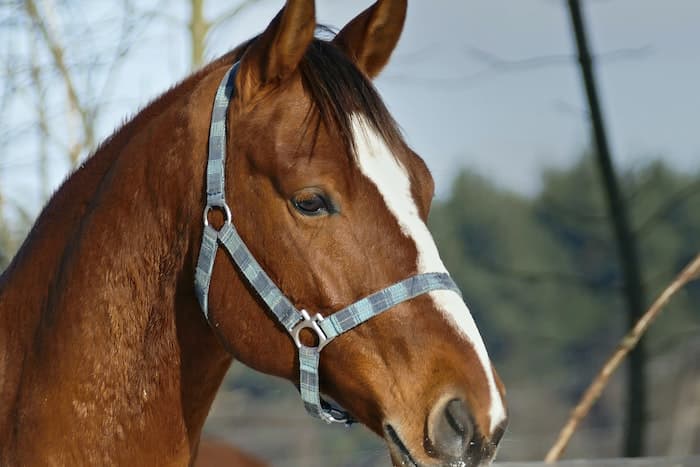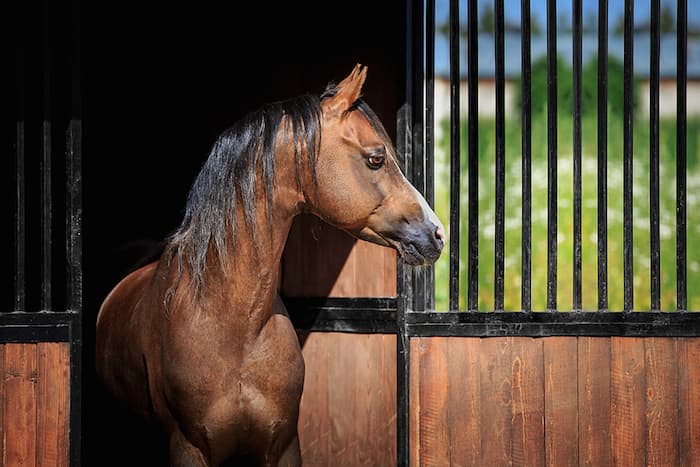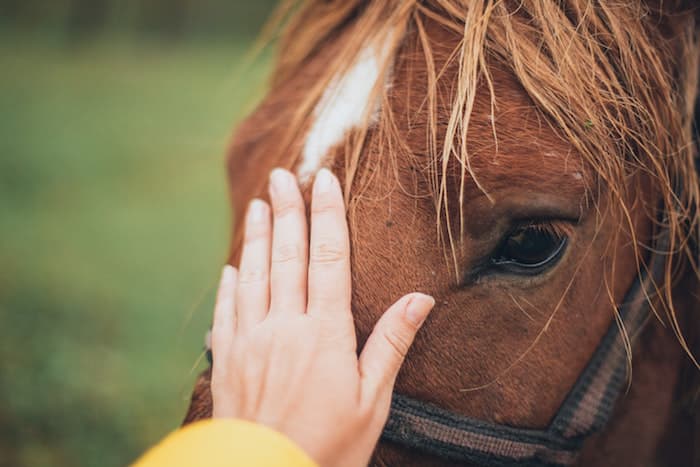As horses gradually age into their late twenties and thirties, it causes progressive dipping or swaying of their back. However, not all horses acquire a swayback over time. Some are born with this deformity. The well-being of aged horses, whether they are swaybacked or not, can be ensured through proper care and management.
Horse swayback caused as a result of aging is just as natural as the grizzling of facial hair or the deepening of the hollows over the eyes. Swayback, also known as Lordosis, can result in paralysis and neurologic dysfunction in horses. Securing good saddle fitting for swayback horses is therefore essential to guaranteeing their comfort and avoiding the condition from deteriorating.
Certain breeds of horses inherit swayback from their ancestors. According to research led by scientists, they could trace these genes back to certain bloodlines within the American Saddlebred breed. However, more research is needed to link the predisposition to a specific gene to see if at all the link exists. There are many other reasons for swayback in horses. Read on to know more:
It Is Never About Nutrition
It has nothing to do with nutrition unless the Body Condition Score (BCS) of your horse is one or two. A top line on a horse cannot be fed. A horse can be made heavy to offset the appearance of dropped or swayed back, but it still won’t change its condition. Moreover, the excess weight of the horse will worsen this problem. The additional weight will put pressure on the ligaments along the vertebra. Besides, it is difficult for an overweight horse to be fit.
Reasons for Swayback in Horses
Alterations in the Muscles
When the tops of a horse’s vertebra can be seen but not his ribs or hips, the two muscles that make up the back have severe muscle atrophy. These muscles are known as Longissimus and Multifidus.
The atrophy doesn’t happen because of old age, lack of groceries, and work in the proper frame but because of restriction of the nerves that communicate with the aforementioned muscles. Proper nutrition is not being received by the muscle from the tissues around it because they aren’t getting the message. Also, the muscle isn’t getting the required information to move correctly; therefore, the correct information isn’t given to the brain.
It cannot be fixed with more work on a lunge line or under saddle; rather, it would make it worse.
The Problem of Posture and Compensatory Movement
A swayback also happens because of a problem with a posture that a horse is accustomed to and has been doing so for quite some time. It is simply because this incorrect posture is comparatively less painful than the correct posture.
Most of the time, the reason that causes swayback is unknown, which is alright, but some of the common reasons that cause restriction resulting in a weak top-line include a back-pulling accident, riding the horse at the back of the vertical, stiff shoulders, straining of the sacrum and Sacro-iliac (SI) region, imbalanced feet, light soles and worn-out feet, stiff ribs, and saddles that are not the right fit or are incorrectly positioned.
The horse may suffer from more than one reason from the aforementioned list. The reason could also be because the horse has high or low front feet, a neck that is restricted, and a stagnant sacrum. Horses like these are often left behind the withers and might have a raised portion that is also known as ‘roach’ in the lumbar area.
Dropped Back
This is an important cause of swayback that should be of concern. You can tell what is involved depending on where the back is dropped. If the drop is behind the withers, the problem is usually in the neck, shoulders, and withers. If its back is further away, it is because the pelvis is rotated and the sacrum is restricted. These horses have limited mobility in their hind limbs and have short strides in their back legs. If the horse has both issues, it is quite risky.
Arthritis, Metabolic disease, PPID
Some diseases can make things worse, such as Arthritis in the tiny facet joints of the back. It interferes with the nerves right when they join the spinal cord. It can be diagnosed by radiographs. Its treatment depends on the severity of clinical signs, such as neurological deficits. Changes in the Endocrine can also worsen the condition. Diseases such as insulin resistance and PPID can often cause it.
Lack of Proper Training
Your horse will most likely be traveling with its head up and back hollowed if it doesn’t know how to use its hindquarters and uses its forehand instead. Learning how to ride your horse is needed so that its hindquarters are engaged. This is called collection by many, and even though it is difficult to attain and comprehend, it will ensure the comfort of your horse and its back will remain strong over its lifespan.
The Flaw in Your Riding Skills
The way you ride your horse matters because if it doesn’t know how to use its hindquarters and core muscles to hold a rider, it may counteract its ability to carry you well. If you are overweight for the horse or if you ride by bouncing and pounding on your horse’s back, it will have a sore back, weakened muscles, and hollow back.
Weakened Soft-tissue, the Downward Pull of Abdomen, Trauma, Conformational Defect
There are many other causes of swayed back, such as weakened soft-tissue that support the spinal column along with the weight of the abdomen pulling downward, a vertebral conformational defect, or trauma that injures the vertebral column.
Generally, there are two broad classifications of horses with swayed backs. One of them is when the older horse sags as the soft-tissue structures supporting his back loosen and the weight of his belly pulls down on his spinal column. These stresses normally result in modest spine angles that do not reduce a horse’s life expectancy. These horses will appear as if it is in no pain and continue living its life, oblivious to the condition.
Breeds such as the older Broodmares have a higher risk as a result of carrying large loads due to pregnancy for a long time, repeatedly throughout their adult lives. Therefore, many older geldings also exhibit conformation.
There are other less common presentations, such as juvenile-onset swayback, that occur early in life. Cases like these have vertebral malformations, resulting in early-onset conformational deviation, and the condition won’t progress much over time. Even though these horses can lead a happy life, depending on the extent of the deformation, it could prevent them from doing their intended job.
Most swayback horses aren’t born with this condition. It usually occurs because the horse hasn’t been taught how to carry a rider the right way. Horses with a hollow or sway back will hold their heads high and their backs will be concave or ‘hollowed.’ A horse’s stride is often rigid and stumpy, and while the neck and head may appear gracefully arched, the bend may not. Lameness will occur as a result of hollow backs.
Final Thoughts
Swayback can be passed down through the generations, induced by old age, or observed in many horses after years of carrying additional weight. The riddance of the swayback horse depends on the severity of the sway and the horses’ expected level of activity. This may be prevented and even somewhat corrected with proper training and riding, as with other horse ailments. A saddle that is properly fitted to your horse might also aid a horse with a swayback.




